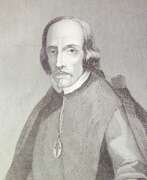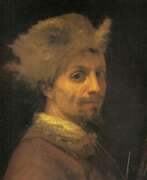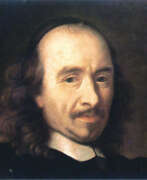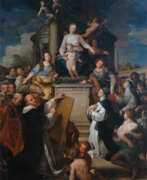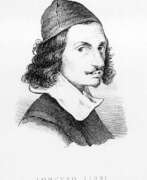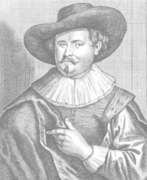Poets Baroque
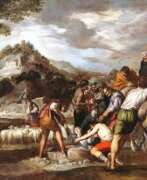

Antonio del Castillo y Saavedra was a Spanish Baroque painter, sculptor, and poet, renowned for his significant contributions to the Cordoba School of art. Born in Cordoba, Spain, in 1616, Castillo y Saavedra grew up under the influence of his father, Agustín del Castillo, also a painter. His early education continued under Ignacio Aedo Calderón, and later, in Seville, he studied with Francisco de Zurbarán and his uncle Juan del Castillo.
Castillo y Saavedra's work is distinguished by its adherence to naturalism, a style he maintained despite the evolving Baroque trends of his time. His landscapes and narrative paintings, often featuring elaborate architectural or landscape settings, showcase his unique spatial sense and meticulous studies of nature. Praised as an "excellent landscape painter" by his contemporaries, Castillo y Saavedra was adept at capturing nature's essence and integrating it seamlessly into his historical oil paintings. His works, such as the Calvary of the Inquisition and the series on the life of Joseph, exhibit a luminous sense of landscape with refined color palettes.
Some of his most celebrated works are housed in prestigious institutions around the world. The Museo del Prado in Madrid, Spain, holds an impressive collection of his paintings, including the notable series on the story of Joseph. The Museo de Bellas Artes de Córdoba also features his significant works, like the Calvary of the Inquisition.
Despite his death in 1668, Castillo y Saavedra's legacy lives on through his contributions to the Cordoba School, influencing generations of artists who followed. His work remains a testament to the rich cultural heritage and artistic prowess of the Spanish Golden Age.
For collectors and experts in art and antiques, Antonio del Castillo y Saavedra's works represent a pinnacle of Baroque art. To stay informed about new sales and auction events related to Castillo y Saavedra's work, we invite you to sign up for our updates. This subscription will keep you at the forefront of the latest developments in this fascinating field.
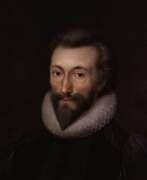

John Donne was a British preacher and poet, a major exponent of English Baroque literature.
His father was a wealthy merchant, and he was educated at Oxford, Cambridge, and Lincoln's Inn. Then began to write satires, which were willingly passed from hand to hand. The first three of Donne's famous satires date from 1593, and the others were written at various times before 1601. In 1594 he began his travels in Europe, accompanied the Earl of Essex on the capture of Cadiz in 1596 and on the expedition of 1597, and was in Italy and Spain.
In 1601. John Donne wrote his remarkable poem "The Progress of the Soul", in 1610 published his prose work against Catholics "Pseudo-Martyr", and in 1611. - an even harsher polemical treatise, Ignatius in Conclave. John Donne was also the author of many sonnets, love poems, elegies, epigrams, and religious sermons.
In 1621 John Donne was appointed rector of St. Paul's Cathedral in London, and near the end of his life he became a popular eloquent preacher whose sermons were eagerly printed and published. 160 of his sermons have survived, including the most famous, Death's Duel, which he delivered in Whitehall before King Charles I on February 25, 1631, a few weeks before his own death.
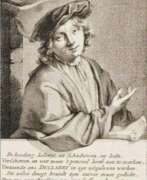

Heyman Dullaert was a Dutch painter and poet of the Golden Age. He was a student of Rembrandt, but was better known for his poetry than for his works of art. His paintings, often trompe-l'œils, can be seen at the Kröller-Müller Museum.
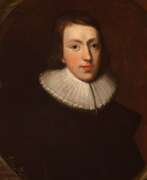

John Milton was a British poet and writer-publicist, intellectual and politician of the English Revolutionary period.
Milton first planned to become a priest, studied at Cambridge University, and then abandoned this activity. Several years he spent reading and self-education, learning many languages. In 1638 Milton traveled around the continent for about a year and a half, spending much time in Italy, primarily in Rome and Florence. He befriended young Italian literati, and his encounter with Galileo further influenced his writing.
Milton became best known for his poem Paradise Lost in Ten Books, which declares its purpose to justify the ways of God to man, but also touches on both universal and personal themes. Milton was the first author to use the word "cosmos" in our modern sense of "outer space," and his space epic takes place in a confidently Copernican universe.
In his prose works, Milton advocated the abolition of the Church of England and the execution of Charles I. From the outbreak of the English Civil Wars in 1642 and long after the restoration of Charles II as king in 1660, he spoke out against tyranny and state-sanctioned religion in all his works. As a Protestant, Milton was often in conflict with the Roman Catholic Church. As a civil servant, Milton became the voice of the English Commonwealth after 1649 and then under Oliver Cromwell, conducting international correspondence and defending the government against polemical attacks from abroad.
John Milton is considered the most important English writer after William Shakespeare. Author of political pamphlets and religious treatises, he is one of the most famous writers of the 1650s, the vibrant era of the English Revolution (Civil War).
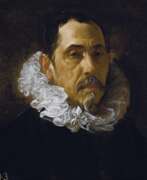

Francisco Pacheco del Río, baptized on November 3, 1564, and passing away on November 27, 1644, was a distinguished Spanish painter. Renowned for his dual role as Diego Velázquez's teacher and father-in-law, Pacheco's influence extends beyond his familial ties, contributing significantly to the arts through his seminal textbook, "Art of Painting." This work remains a crucial resource for understanding 17th-century artistic practices in Spain. Often referred to as the "Vasari of Seville," Pacheco's insights into painting theories and reflections on his contemporaries have left an indelible mark on the history of art, despite criticisms of his conventional execution in painting.
Pacheco's early life was marked by an immersive education in art, learning from Luis Fernandez and drawing inspiration from Italian masters. His journey included a pivotal sojourn to Madrid and Toledo in 1611 to study the works of El Greco, which further enriched his artistic repertoire. Upon his return to Seville, Pacheco opened an art school, laying the groundwork for his future contributions to art education and theory.
His career was notably characterized by his position as the official censor for Seville's Inquisition, which influenced his academic approach to religious subjects. Despite this, his paintings, such as the Last Judgment and Martyrs of Granada, are celebrated for their monumental scale. Pacheco's most enduring legacy, however, may be his influence on Diego Velázquez, whom he mentored for six years. Velázquez's marriage to Pacheco's daughter Juana in 1618 further solidified their personal and professional bonds. Pacheco's "Arte de la pintura" not only provided invaluable biographical information on Spanish painters of his era but also laid down foundational theories on iconography, materials, and technique.
For those interested in exploring Francisco Pacheco del Río's works further, notable pieces can be found in prestigious collections, such as the Museo Nacional del Prado, enriching our understanding of his impact on the art world.
Art enthusiasts, collectors, and experts are encouraged to sign up for updates to stay informed about new product sales and auction events related to Francisco Pacheco del Río, ensuring you remain at the forefront of developments in the fascinating world of art and antiques.
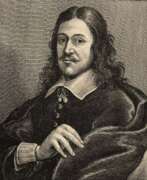

Bonaventura Peeters the Elder was a prominent Flemish painter, draughtsman, and etcher specializing in marine art during the 17th century. His extensive body of work encompassed marine battles, storms at sea, shipwrecks, and views of ships in rivers and harbours.
Peeters displayed a keen understanding of ships, capturing their intricate details. His earlier works exhibited tonal landscapes influenced by Dutch painting, while later pieces reflected vibrant colors inspired by Italian classicism. He skillfully depicted dramatic shipwrecks, serene ports, and intricate portrayals of ships. Many of his paintings depicted actual locations along the North Sea and the river Scheldt, while others showcased imagined scenes of far-away Mediterranean and Middle Eastern ports. Peeters also collaborated with family members and fellow artists, and his drawings and engravings were included in notable publications like Blaeu's Atlas Maior.


